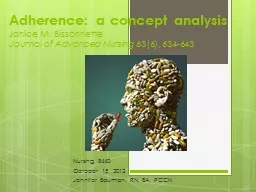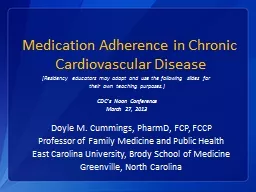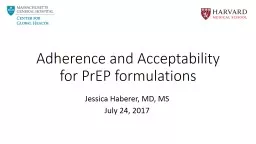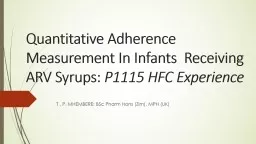PPT-Adherence: a concept analysis
Author : lois-ondreau | Published Date : 2018-11-07
Janice M Bissonnette Journal of Advanced Nursing 636 634643 Nursing 8440 October 15 2012 Jennifer Bauman RN BA PCCN Background 2003 WHO initiative to improve rates
Presentation Embed Code
Download Presentation
Download Presentation The PPT/PDF document "Adherence: a concept analysis" is the property of its rightful owner. Permission is granted to download and print the materials on this website for personal, non-commercial use only, and to display it on your personal computer provided you do not modify the materials and that you retain all copyright notices contained in the materials. By downloading content from our website, you accept the terms of this agreement.
Adherence: a concept analysis: Transcript
Download Rules Of Document
"Adherence: a concept analysis"The content belongs to its owner. You may download and print it for personal use, without modification, and keep all copyright notices. By downloading, you agree to these terms.
Related Documents














